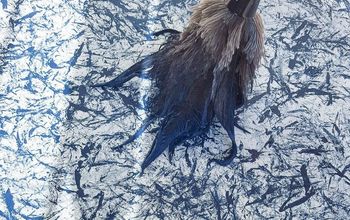How long do nasturtiums last for.
Related Discussions
GNATS - How to get rid of them?
Somehow my house and garden got tiny gnats that killed my fuchsia plant and fly everywhere. I have tried ALL the Web recommendations - soap and oil dishes, sand in th... See more
Marigolds growing! Should I pinch the buds?
My marigold plants are growing. I heard that pinching the buds until Autumn will allow them to grow without killing the plant. Is this true?
Growing garlic
Growing our first garlic, should we wait until the leaves are drying out before we pick it? Husband picked first one today along with our first potatoes.
How to keep mice out of your garden?
Hi everyone, I have mice in my garden destroying my vegetables and I have also noticed them in the barn and shed. Please can someone tell me how to prevent them from ... See more
What's the best flower/plant to grow in Texas?
I know that opinions vary, but what's your opinion?!I have great luck w Rosemary plants. Green all year long.



that depends on your location
Here is some info on them.
https://www.youtube.com/watch?v=VwDRw1jEUKA
Nasturtiums are annuals, they only last one season, however, each flower produces a seed that you can plant again. In my area I just leave the seeds on the ground and in the spring new plants grow
Bloom Period
Expect flowers from early summer through fall in cooler climates.
In milder growing conditions, nasturtiums bloom fall through spring, and tend to fade in summer heat.
Sun Exposure
Nasturtiums will grow in either full sun to partial shade. They will bloom best in full sun, but they plants prefer not to be in extreme heat.
All About Growing Nasturtiums
Nasturtium plants are loved for their rich, saturated, jewel-toned colors. They are fast and easy to grow and, in fact, do best with a little neglect. There are varieties for almost every gardening purpose: bushy plants for borders and edges, trailing plants for walls and containers, and climbers to add dramatic height in a garden. The leaves and flowers are edible, with a peppery tang, and even the seed pods are used as a substitute for capers.
Check out this nasturtium capers recipe.
Nasturtiums plants grow very full, with lots of bright green leaves and spots of brightly colored blossoms poking out of the masses of foliage.
Botanical Name
Tropaeolum
Common Name
Nasturtium
Hardiness Zones
Some varieties of nasturtiums are perennial in USDA Zones 9 - 11, but most are annuals plants, growing from seed to seed in one season.
Mature Size
As with most plants, the mature zone will vary depending on the type of nasturtium you plant and the growing conditions.
Using Nasturtiums in Garden Design
Nasturtiums will spill beautifully over walls and onto pavers, when used as edging plants. They also hold up very well in containers. Climbing varieties will amble up and through shrubs. Bushy, ground hugging nasturtiums will fill in blooming gaps among complementary colored day lilies and roses. And you can use clusters to brighten up the vegetable garden.
One thing to be aware of, when choosing which nasturtium to grow, is that the flowers of some varieties can be obstructed by their amble foliage. If you are growing your nasturtiums at ground level, choose one of the newer varieties that hold their flowers above their leaves, so you can easily see them.
Suggested Nasturtium Varieties to Grow
Nasturtium Growing Tips
Nasturtiums are usually started from seed, so you won’t often find them available as plants at nurseries. However, the seeds germinate quickly and the plants will be up and blooming in little time.
Seeds can be sown directly in the garden, when the soil has warmed, or started indoors about 2-4 weeks earlier. Nasturtiums don’t especially like being transplanted, so starting indoor seedlings in peat or paper pots will reduce transplant shock. Once planted, they tend to take care of themselves.
Caring for Nasturtium Plants
Pests & Diseases of Nasturtiums
They can also be prone to flea beetles, slugs and the caterpillars of cabbage white butterflies.